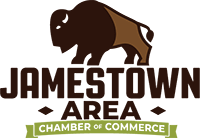For most small business owners, survival is a daily art. There’s payroll to meet, inventory to restock, rent to pay, and somehow — growth to finance. While profitability often hogs the spotlight, it’s cash flow that keeps the lights on. Many thriving operations have buckled not from lack of revenue, but from a shortage of liquidity when it was needed most. The challenge, then, isn’t just about earning — it’s about managing money in a way that sustains stability and enables calculated expansion. That’s where a few grounded, sometimes counterintuitive, strategies come into play.
Dialing in the Timing of Cash In and Cash Out
The rhythm of a business’s income and expenses rarely align perfectly. Too often, money flows out faster than it comes in. That lag is where many owners feel the pinch. Being strategic about when bills are paid — without damaging vendor relationships — can create breathing room. Likewise, nudging customers to pay sooner, whether through incentives or clearer invoicing systems, keeps the cash pipeline from running dry when it’s needed most.
Structuring Your Business Matters More Than You Think
Forming a limited liability company gives small business owners more than just legal protection — it can also make a noticeable impact on cash flow. With an LLC, your taxes may be simpler and more favorable, and you’re often better positioned to open a business bank account or qualify for credit. That structure can also create clearer boundaries between personal and business funds, which leads to smarter financial tracking. To avoid hefty legal bills, consider saving on attorney fees by registering through self-filing or a reputable service — especially if you're looking into how to form an LLC in North Dakota.
Managing Inventory with Precision, Not Emotion
Inventory often gets romanticized — full shelves, abundant stock, the pride of being ready for anything. But unsold inventory is frozen cash. Every product sitting idle is money that could be deployed elsewhere — toward marketing, payroll, or debt reduction. Smart inventory management isn’t about being bare-bones; it’s about matching stock to realistic sales forecasts and learning from seasonal patterns. Using data to predict demand lets owners avoid overbuying, while also sidestepping the need for painful discounting just to free up space.
Ditching the One-Size-Fits-All Pricing Strategy
Many small business owners underprice out of fear — fear of losing customers, fear of not looking competitive, fear of overstepping. But when prices don’t reflect costs or market value, it slowly strangles cash flow. A tiered pricing system or value-based approach, where pricing aligns more closely with perceived customer benefit, can buffer margins. This isn’t about squeezing every dime; it’s about creating a model that’s built to sustain. Good pricing gives a business room to weather leaner seasons without panic.
Keeping Personal and Business Finances in Their Own Lanes
One of the less glamorous but most impactful cash flow strategies is maintaining a hard line between personal and business finances. It’s tempting — and sometimes necessary — to mix the two in the early days. But over time, the lack of separation becomes a trap. Clear boundaries create clearer records, which lead to better decisions and easier conversations with lenders or investors. Establishing distinct accounts and paying oneself a fixed salary helps enforce discipline and ensures the business's cash flow reflects reality, not blurred lines.
Revisiting and Reforecasting — Not Just Once a Year
Most business plans gather dust. But the small businesses that last don’t let their numbers sit still. They revisit projections, compare them to real outcomes, and adjust accordingly. Forecasting should be a living habit — done monthly or quarterly — not a formality dragged out for tax season or loan applications. Regular forecasting identifies slowdowns before they become emergencies and reveals opportunities that static plans overlook. It’s not about being reactive; it’s about staying ready, adaptable, and proactive.
There’s a difference between knowing cash flow matters and building a business where it’s central to every decision. When staff understand the importance of timely billing, or when vendors are chosen for flexibility as well as price, that culture takes root. Healthy cash flow isn’t the result of one clever trick, but the outcome of consistent, layered practices. It’s found in the details — in choosing the right timing, tracking the right data, and pricing with purpose. For small businesses, stability and growth don’t always mean more — they mean smarter. And in the long run, that’s what keeps the engine running.
Discover the vibrant community of Jamestown and unlock endless opportunities by joining the Jamestown Area Chamber of Commerce today!

